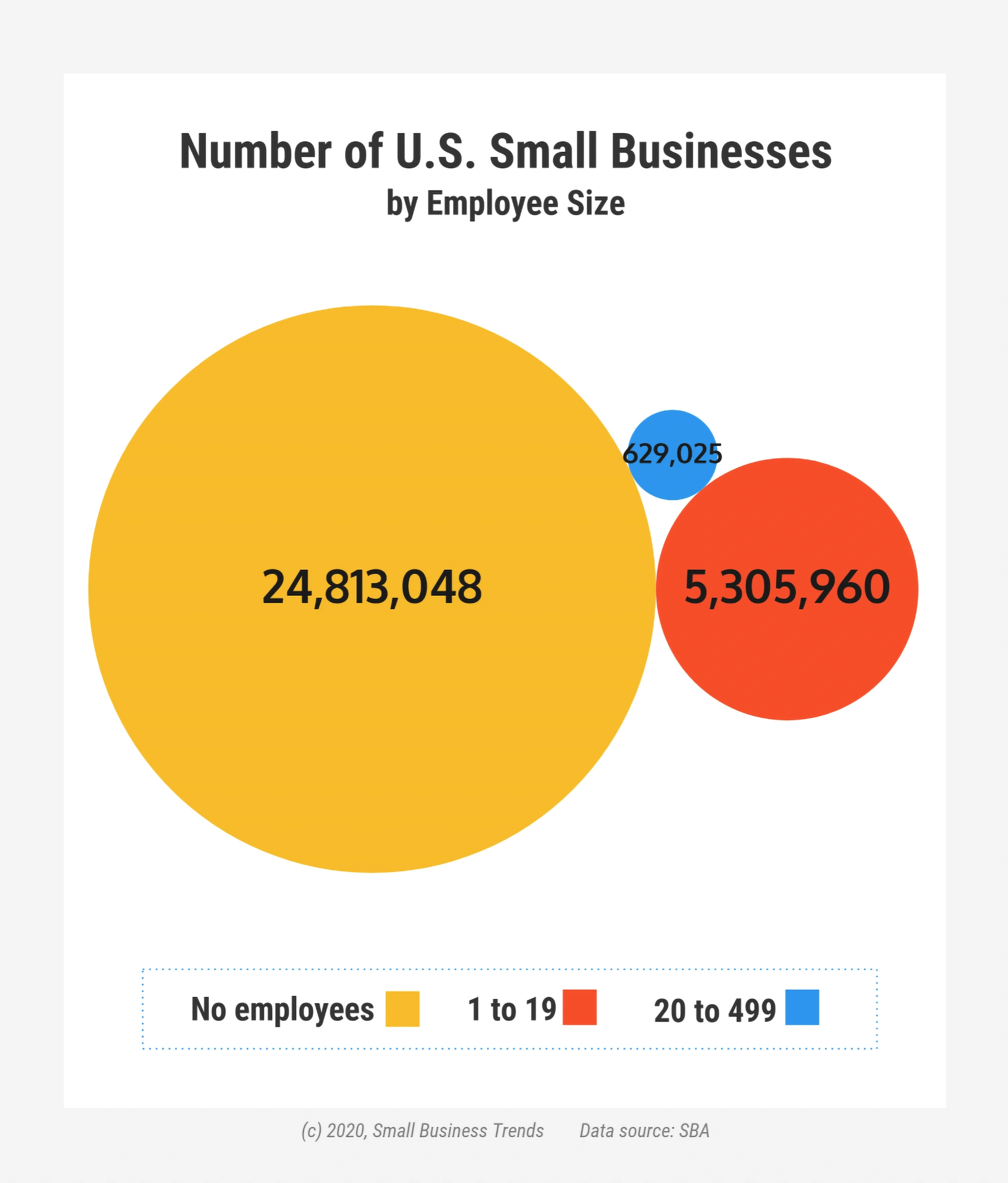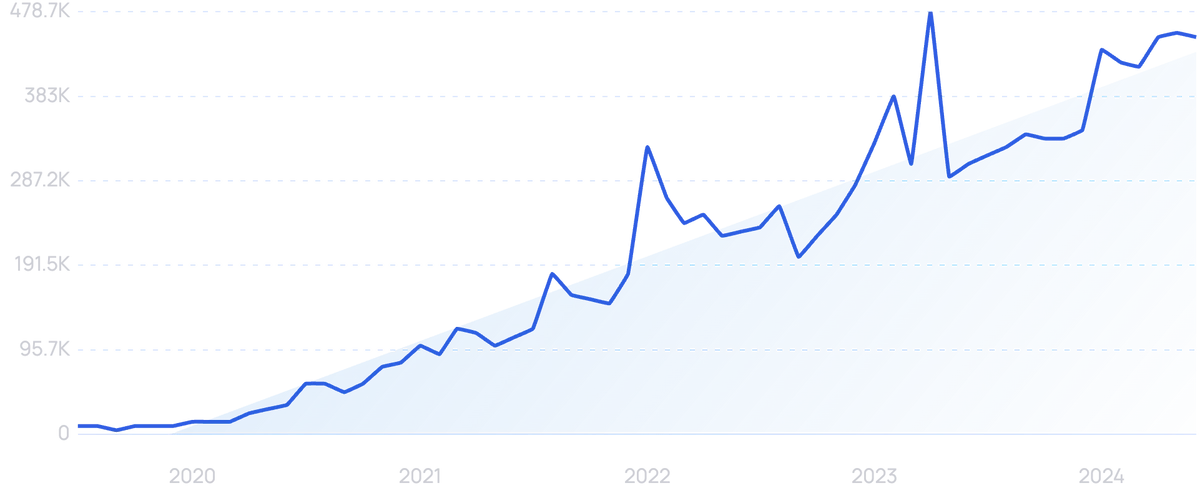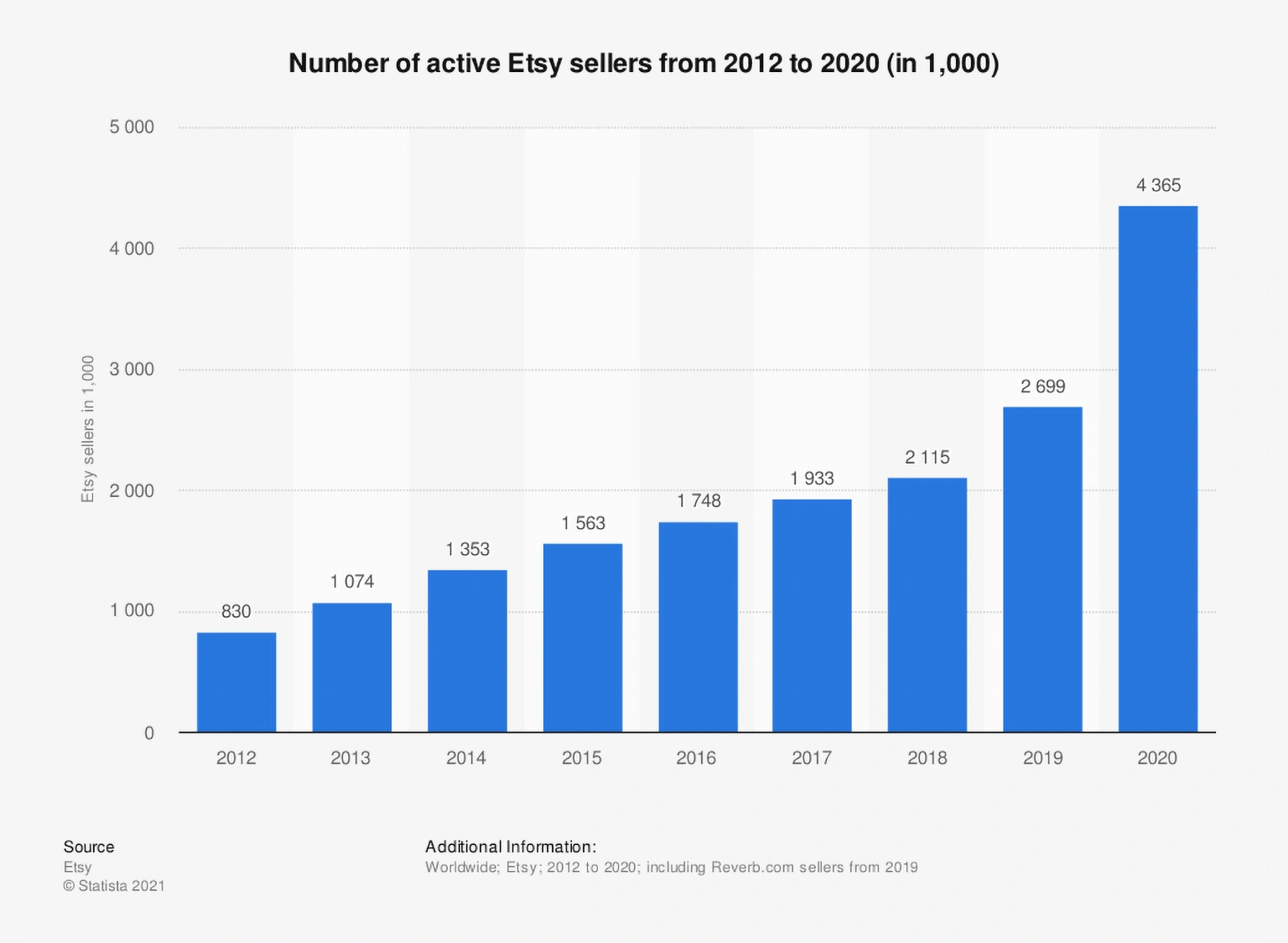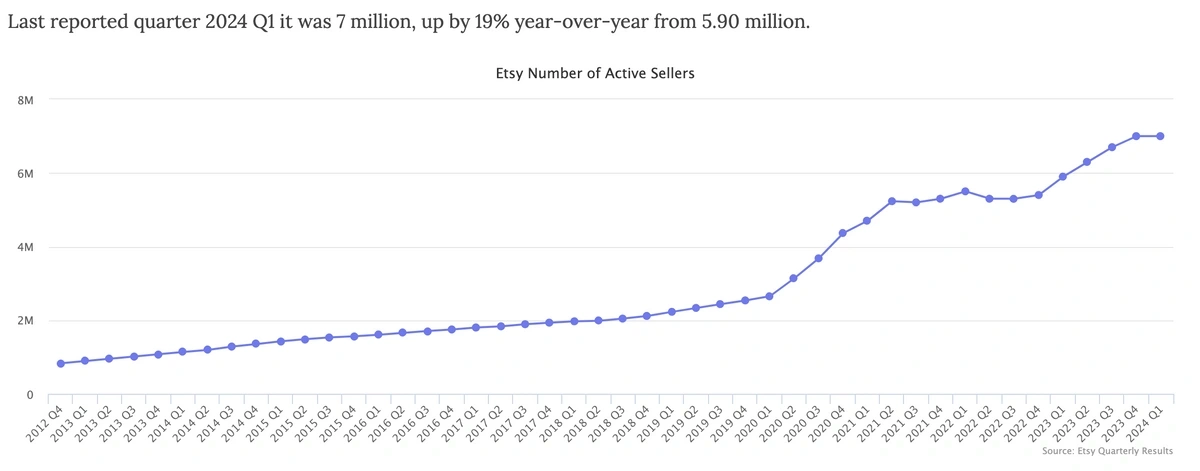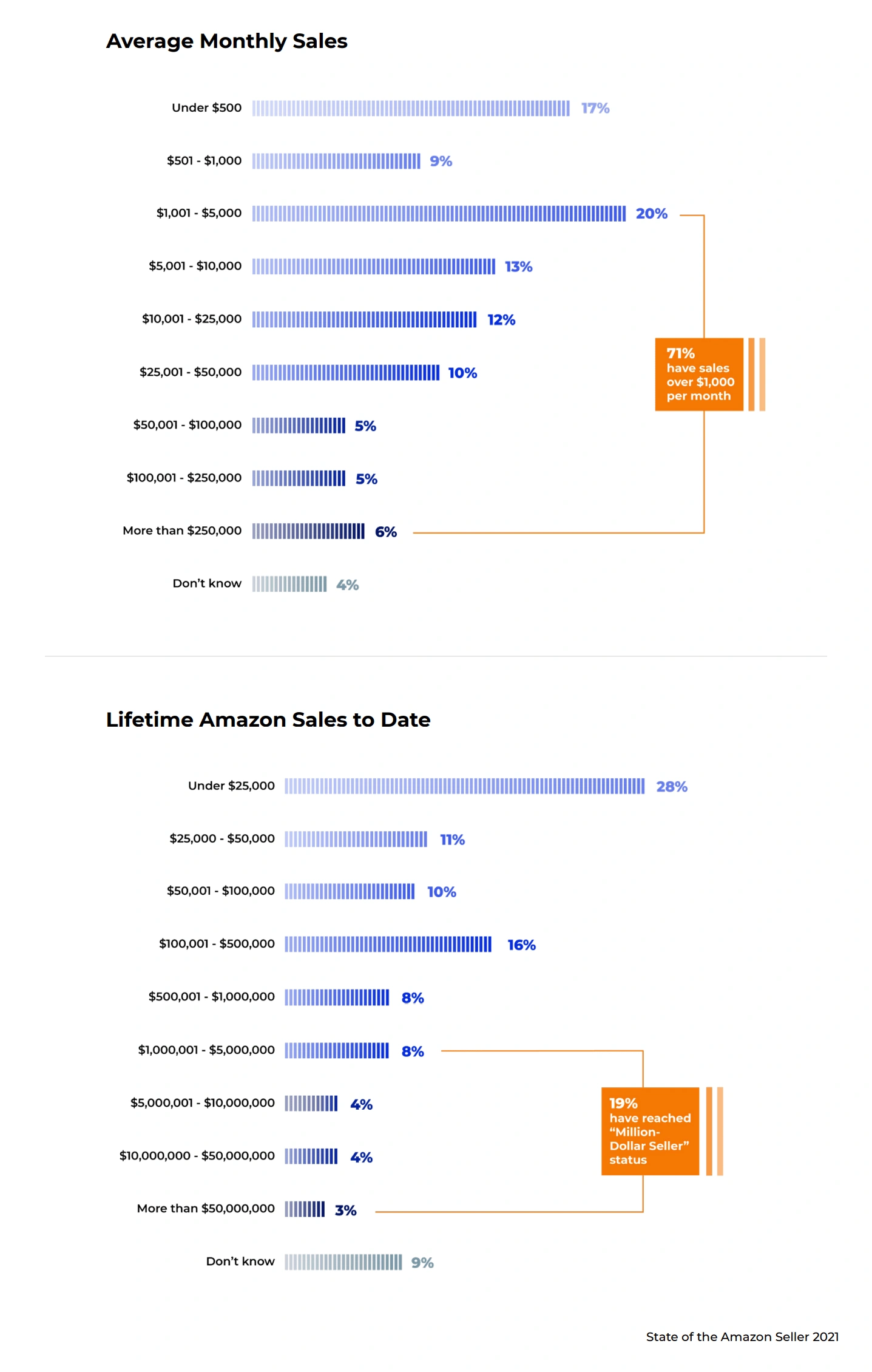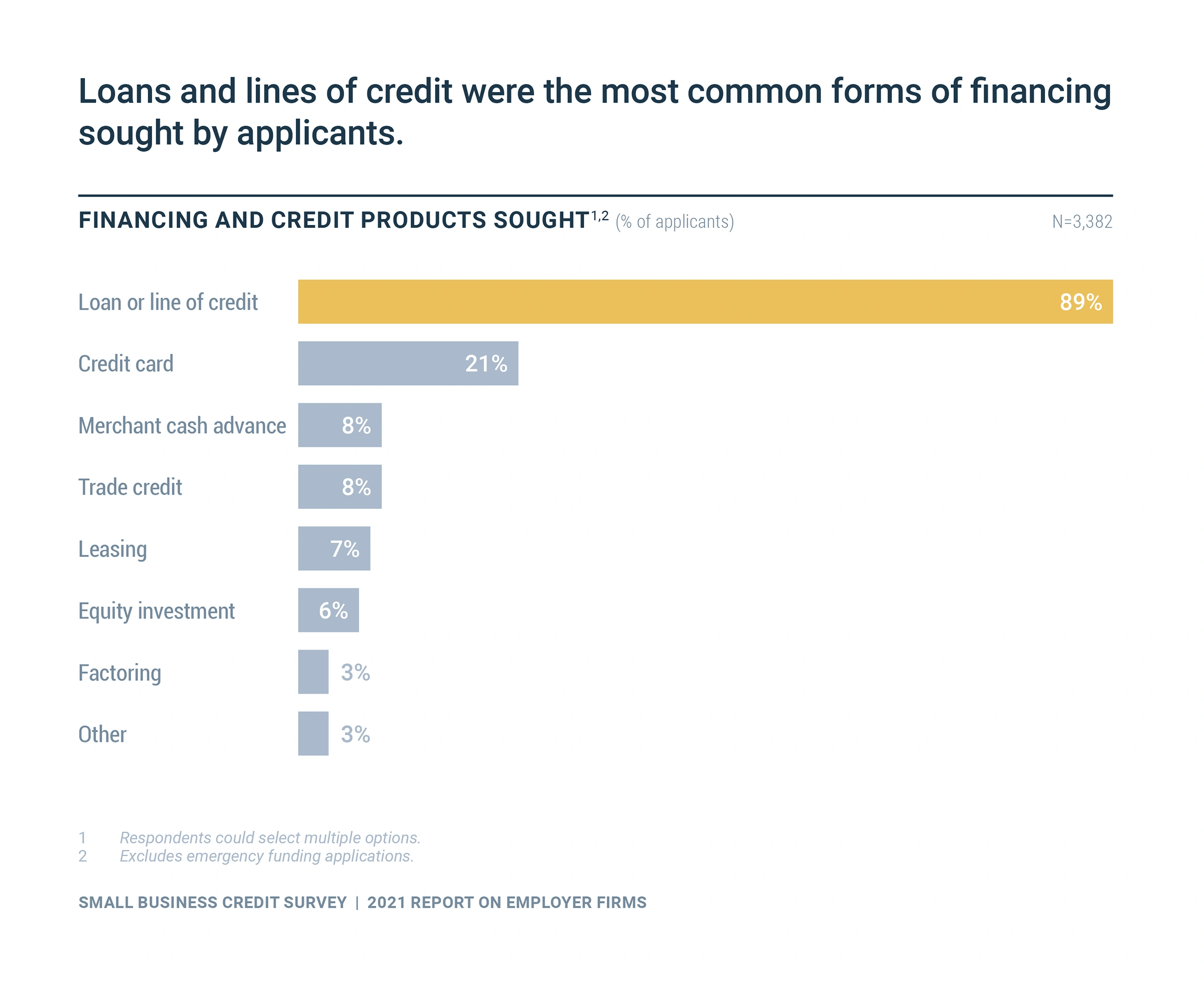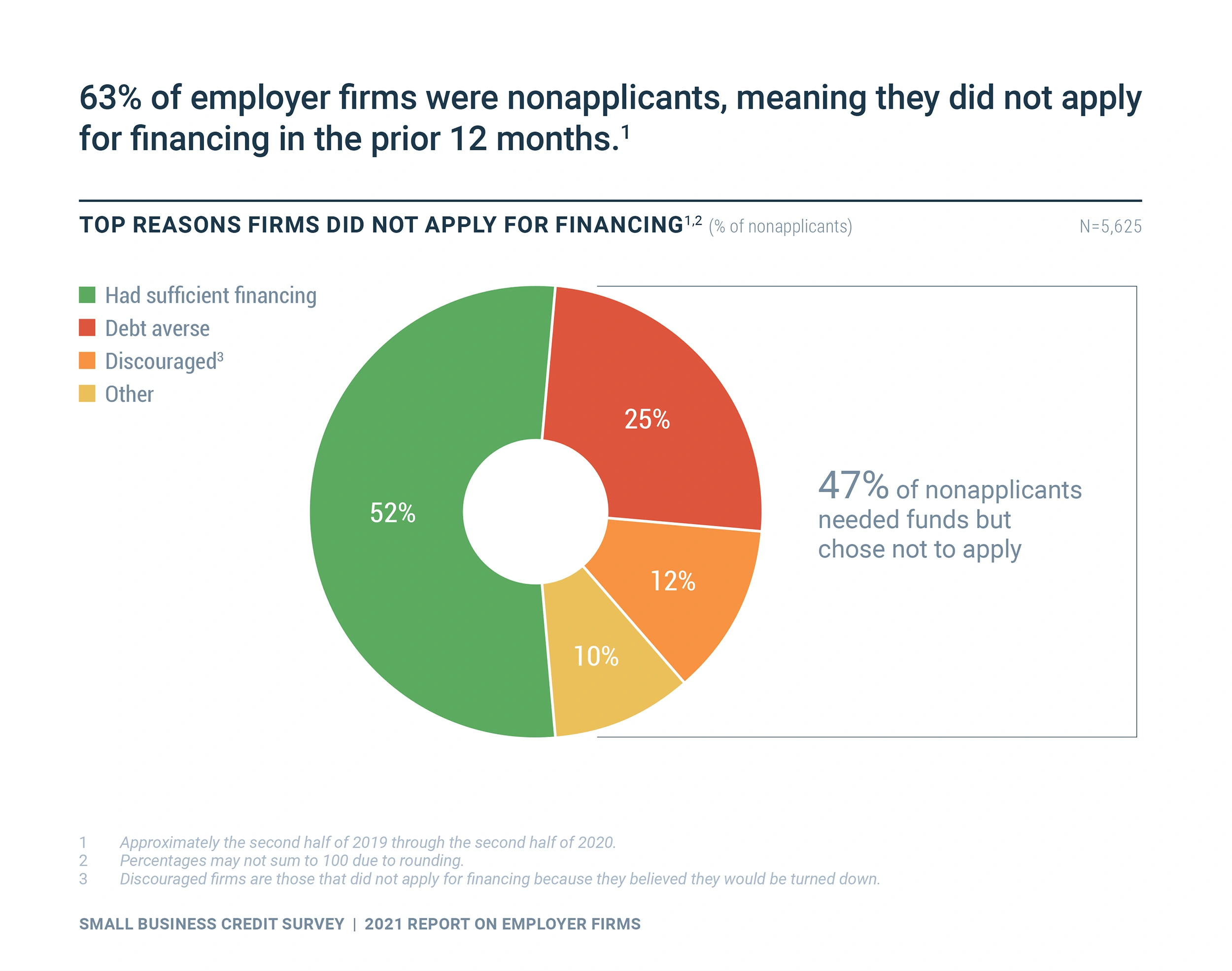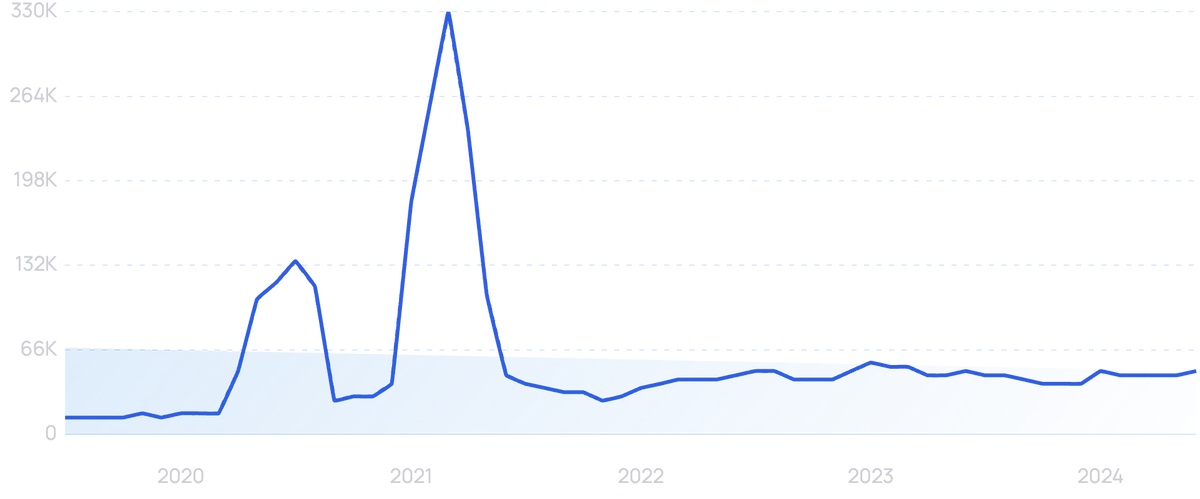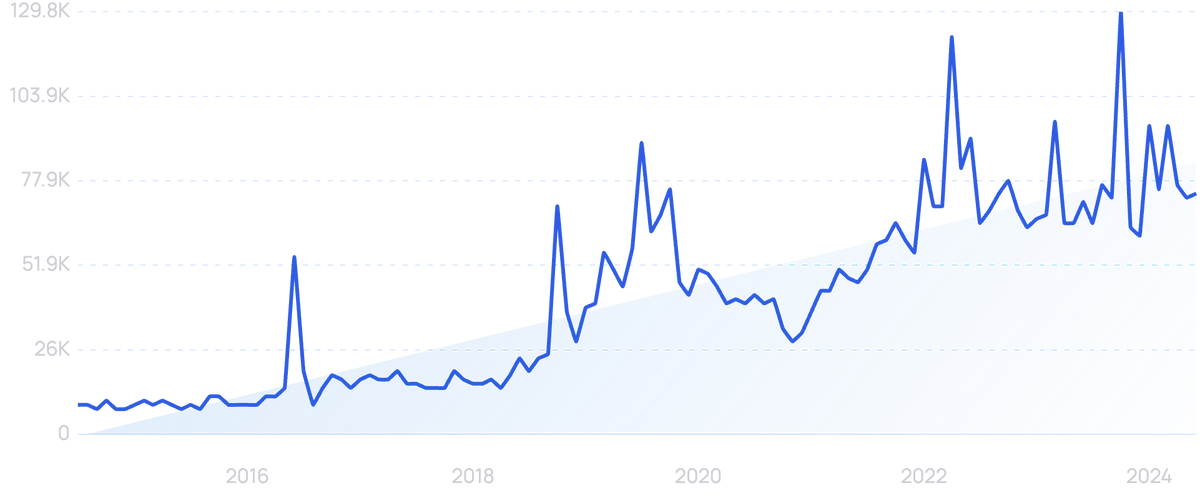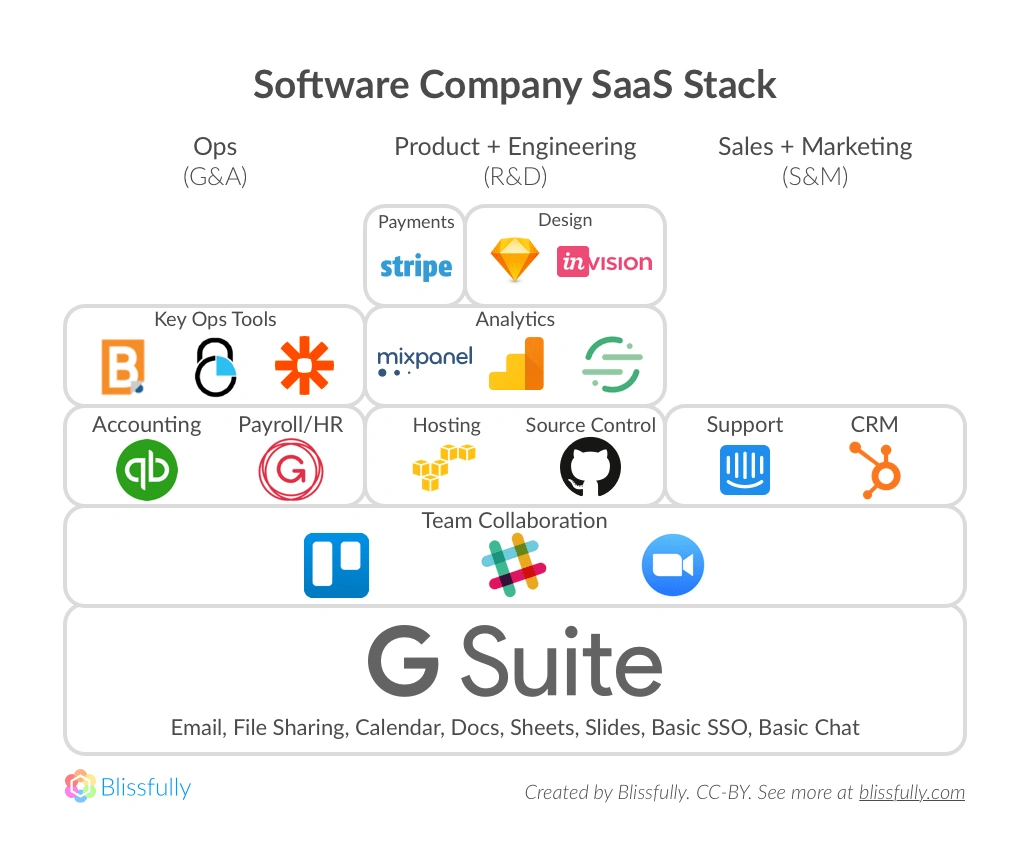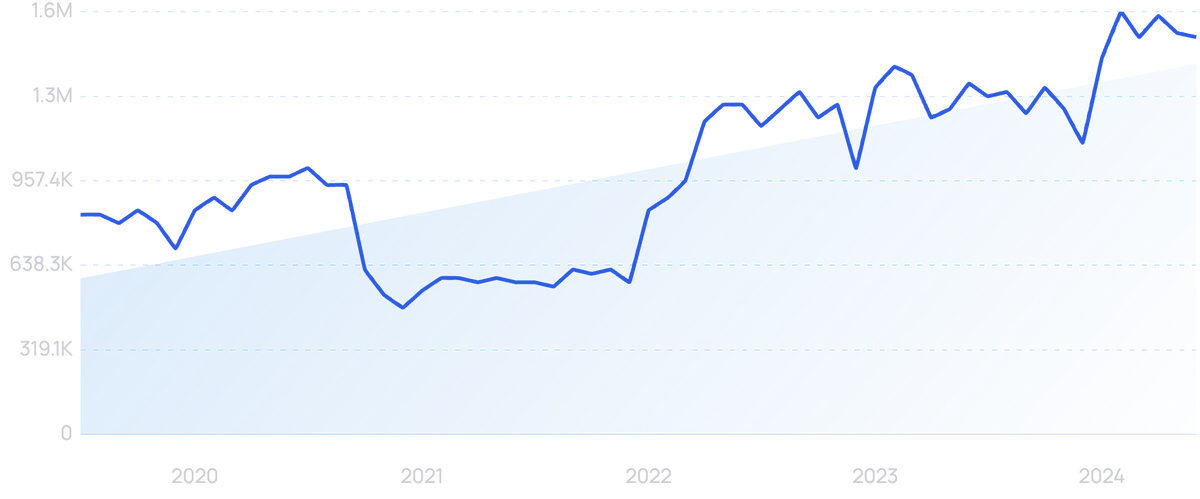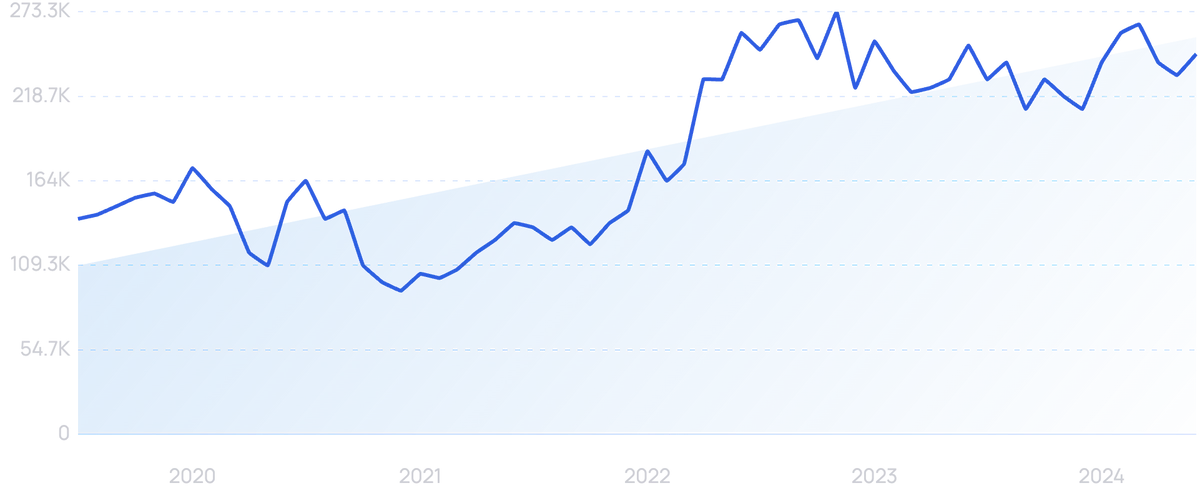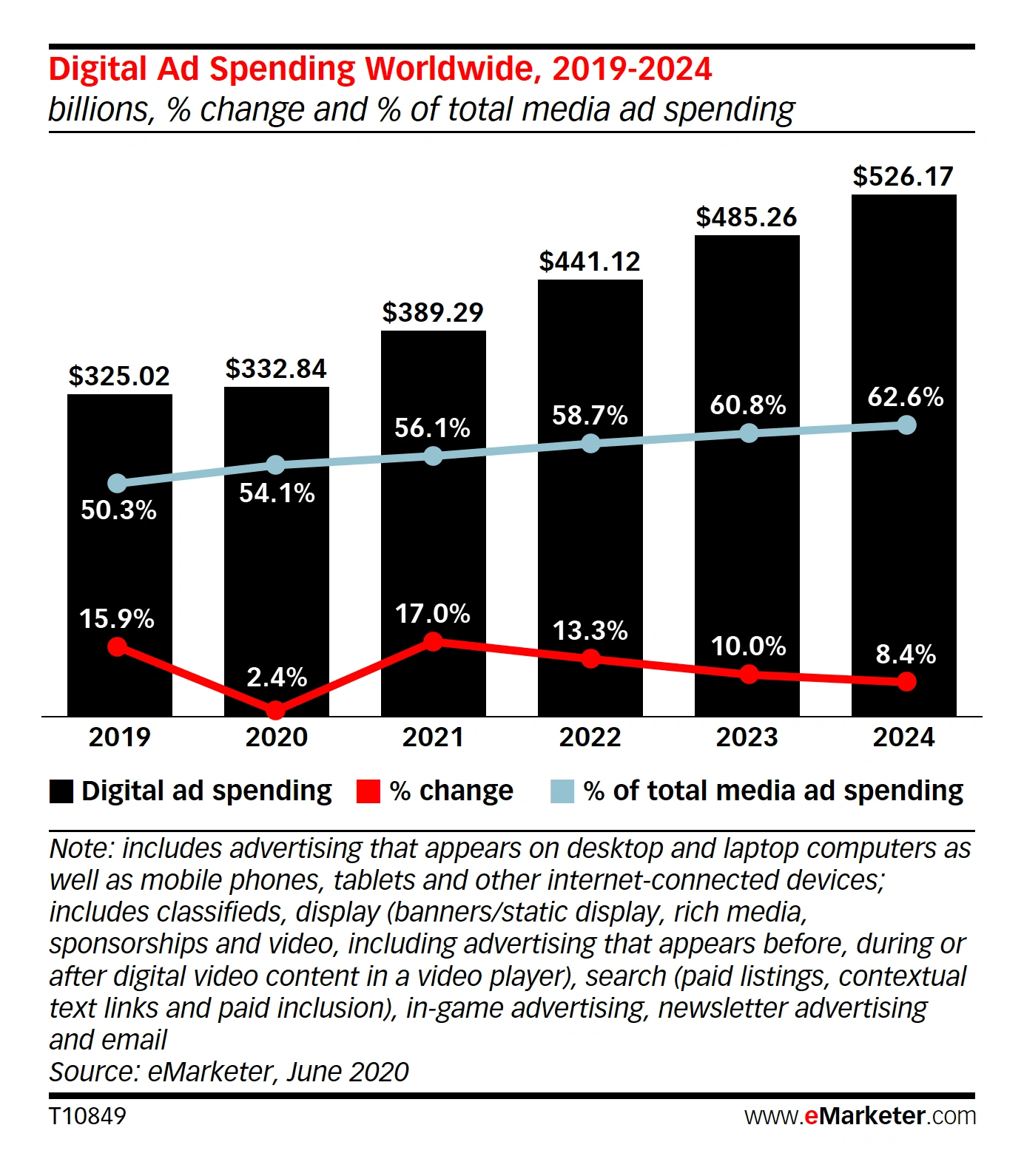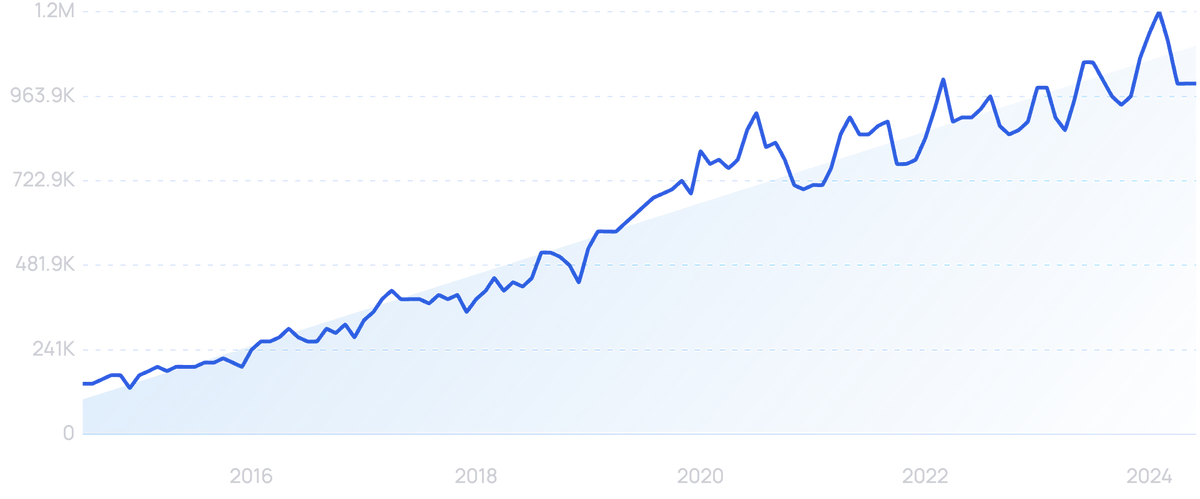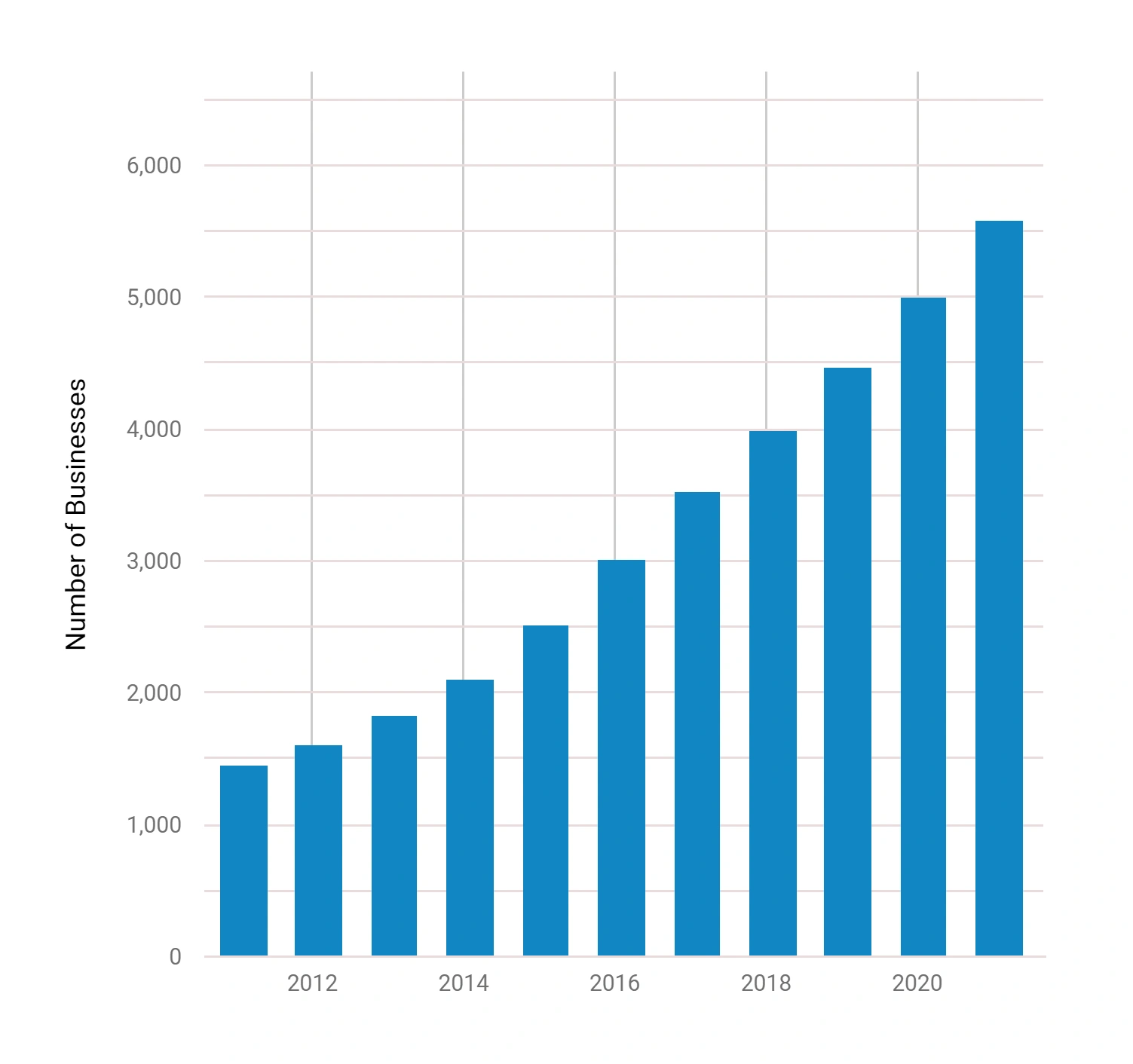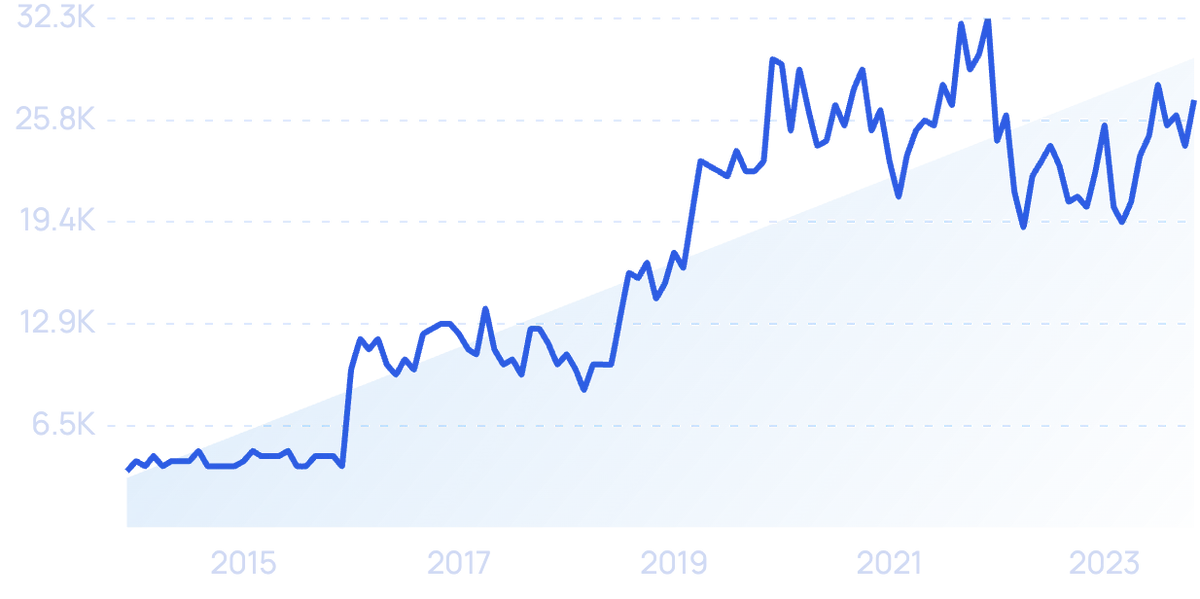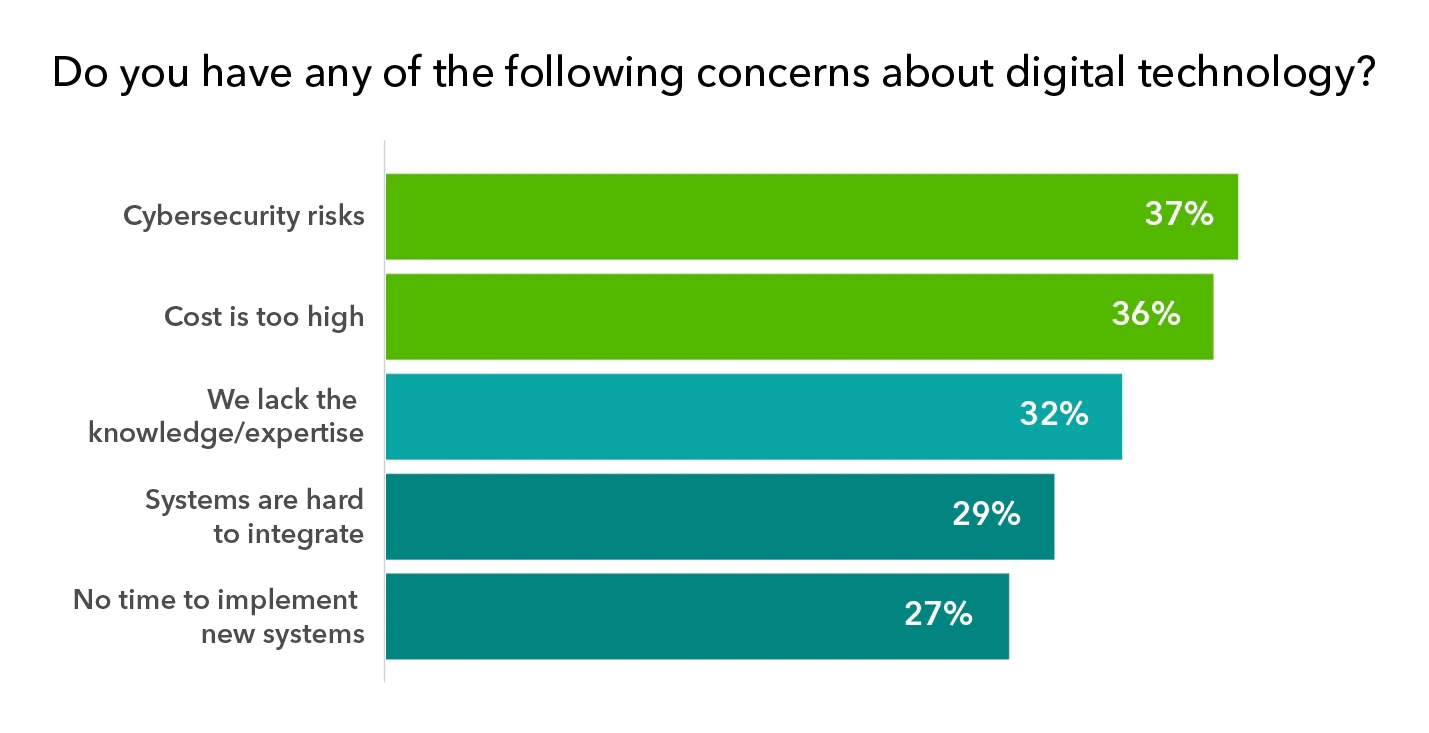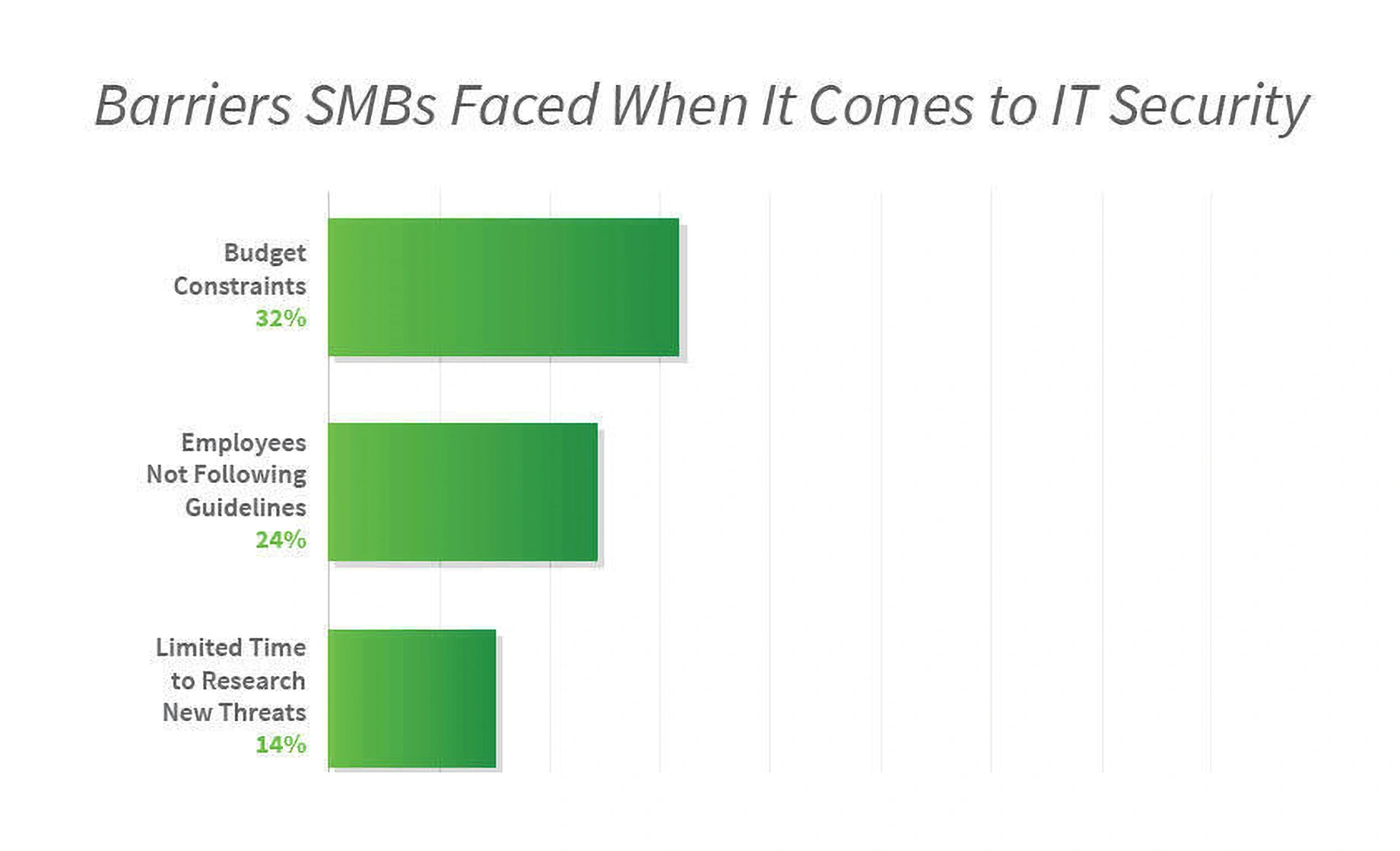You may also like:
In 2020, new business creation accelerated at the fastest pace in over a decade.
Almost all of these were small businesses. Because of this, small businesses will likely have an outsized effect on the US and world economy for years to come.
To understand how this area of the economy could change in the future, read on.
The idea of what a small business can be is changing.
According to Small Business Trends, there are over 30 million small businesses in the US.
Of these, roughly 80% are businesses with zero employees.
The vast majority of small businesses in the US have no employees.
And while this trend isn’t particularly new, expect it to grow in the future.
For instance, the entire Amazon ecosystem has allowed millions of solo entrepreneurs to spring up.
Search interest in “Amazon FBA” has risen by 478% over the last decade.
As we’ll discuss below, eCommerce retailers are some of the biggest beneficiaries. But that’s just the beginning.
In Amazon’s 2020 SMB Impact Report, the company reported that there are roughly 700,000 independent Alexa developers building apps for the product.
In addition, through Kindle Direct Publishing, independent authors have earned more than $1 billion since Amazon launched the program in 2007.
And all the goods being ordered from Amazon require someone to deliver them. That demand has also been met by a flood of small businesses.
Amazon reported that since launching its Delivery Service Partner program in 2018, it has attracted more than 2,200 small businesses to deliver packages. And these companies now employ 95,000 people.
The Apple App Store and Google Play Store ecosystems have provided similar opportunities.
With roughly 1.81 million and 2.64 million apps respectively, Apple and Google have no problem attracting developers as well as customers.
Substack is another platform that is doing the same thing with online publishers.
Searches for “Substack” have grown by 4,600% over the last 5 years.
The company allows individuals to basically start their own newsletter businesses.
While the writer writes, Substack handles the drudgery of subscription management and distribution.
This kind of platform obviously appeals to readers as well, as is evidenced by Substack’s 2 million+ collective paying subscribers across the platform.
Ghost, a non-profit competitor to Substack, has taken a different route.
The organization provides open-source software for bloggers and media companies.
Ghost makes it easy to start a blog or media business and doesn’t take a cut of the revenue that writers generate.
Instead, the company offers a free platform, but in addition, offers several premium tiers (at monthly subscriptions) for writers based on the amount of page views and support needed.
There have been over 100 million Ghost installs since its inception in 2013.
It’s no secret that 2020 changed how we buy goods and services.
But this didn’t just affect large retail stores or popular direct-to-consumer brands. Small businesses are increasingly looking to e-commerce to survive.
A 2021 survey of small businesses by Intuit found that close to three-quarters of small business respondents are selling products or services online.
And services like Shopify, Etsy, and Amazon (home to many small businesses) have all seen a record number of new merchants join their platforms.
Etsy, for instance, has reported that the number of active sellers grew by roughly 62% in 2020 compared to 2019.
Source: Statista
And that number continued to grow in 2023, going from 5.4 million in Q4 2022 to 7 million by the end of Q4 2023.
Number of active sellers per quarter on Etsy.
Although it is primarily known as one of the largest businesses in America, Amazon’s third-party platform offers a way for millions of small businesses to sell products online.
Take it from Amazon’s head of small business, who said (in 2021) that “more than half of all goods sold on Amazon are sold by third-party SMB sellers, and in fact, SMB sales growth outpaced Amazon sales growth last year”.
There are over 2.5 million active third-party sellers on Amazon.
The vast majority of these third-party sellers are small businesses.
Only about a quarter of Amazon third-party sellers report over $25K in monthly sales. And the majority are at about $5,000 and below.
Average monthly sales and lifetime sales data for Amazon third-party sellers.
And just under a third (the largest segment) of Amazon third-party sellers report that they have under $25,000 in lifetime sales on Amazon.
Shopify, which offers a platform that allows merchants to create an online store, also estimates that there are more than 4.8 million businesses now on its platform.
And it’s not just new merchants that are jumping on the e-commerce bandwagon. Traditional small retailers are seeing the opportunity to switch to eCommerce as well.
During the 2020 holiday season, e-commerce retailers reported a 104% increase in sales year-over-year.
During that same period, many small businesses focused on brick-and-mortar retail reported falling sales and dire financial situations.
This disparity in outcomes indicates that a shift is likely to soon occur.
In fact, in January of 2021, 18% of small businesses said that at least 25% of their revenue came from eCommerce sales. This is compared to only 7% of small businesses in 2020.
Expect more traditional small businesses to shift to eCommerce channels in the near future.
Small businesses are funded in a wide variety of ways.
Traditional loan providers like banks have historically been responsible for the majority of funding decisions.
Over 80% of firms surveyed by the Federal Reserve said they used banks as their main financial partner.
And the most common form of financing is a loan or line of credit.
Forms of financing sought by small businesses.
But this may be about to change.
Even with the large number of banks in the US, many small businesses aren’t getting the funding they require.
In fact, close to half of the businesses surveyed by the Fed in 2020 chose not to apply for financing even though they needed it.
Reasons firms gave for not applying for needed financing.
Historically, only around half of all merchants said they receive the funding they need when they apply for it.
It’s fairly obvious that small businesses and new entrepreneurs are in need of more capital. And there are a variety of new start-ups trying to solve this problem.
According to Banking Dive, there are over 140 fintech companies specifically focused on serving SMBs (small-to-medium businesses).
These range from lenders to payment processors.
Kabbage is probably the largest and most well-known company in this vertical.
Founded in 2008, the company started by offering automated loans to online businesses and tech startups.
The company uses alternative data and machine learning to speed up the loan process and make it cost-effective.
It has since graduated to offering loans to brick-and-mortar businesses as well. And it typically focuses on short-term loans for working capital needs.
American Express bought Kabbage in 2020. And while no deal price was disclosed, the deal was estimated to have been worth around $1 billion.
Bluevine is another top company in this sector.
Searches for “Bluevine” have grown by 275% in 5 years.
Bluevine was started in 2013 to focus on the small business market. Since that time it has offered over $14 billion in financing to more than 450,000 small businesses.
One thing these SMB-focused fintech lenders have in common, however, is that they are not banks.
This means that they can’t offer FDIC-insured deposits. As a result, the type of lending they can do is handicapped as well.
One company that is trying to change this, however, is Brex.
Brex is one of the more interesting (and successful) companies in this market.
Search interest in “Brex” is up by 714% over the last decade.
The fintech company has traditionally focused on developing credit cards and spend management software tailored for small tech companies.
And it has already amassed about 10,000 corporate customers and is valued at $12.3 billion.
But it is still relegated to the small corporate credit card market.
However, Brex is looking to change this.
In February, Brex announced that it is seeking to establish an FDIC-insured bank in Utah to provide its customers with lending and deposit services.
In the end, Brex hopes to become the one-stop financial shop for small businesses, start-ups, and online businesses. As a result, it may help in closing the funding gap we discussed above.
And while fintechs are starting to make a dent in the market, they aren’t the only ones pursuing this opportunity.
Some of the top retail marketplaces in the world are taking steps to offer financing to their merchants.
Shopify Capital – Shopify’s financing arm for merchants – made $308.6 million in cash advances and loans in the first quarter of 2021.
And Amazon has partnered with Goldman Sachs’ Marcus to offer receivable factoring to Amazon merchants (up to $1 million).
Overall, new ways of financing are springing up to take advantage of an underserved small business market.
Don’t be surprised when more of these digitally native small businesses start to adopt these fintech companies as their primary banking partners.
Nowhere is it more important to rely on software and virtual solutions than in the world of small businesses.
When your business is too small to hire in-house accountants or back-office employees, it is essential that you find a SaaS tool to help you.
In today’s business environment, that is just what small businesses are doing.
In fact, Clutch reported that 80% of small businesses planned to outsource major functions in 2021.
This is indicative of a growing trend. One in which businesses don’t need many employees to operate. And one in which small businesses are relying on a large number of outside technologies to operate.
It was even found that, back in 2017, 94% of SMBs had utilized some kind of SaaS product.
BMC also found that companies with 50 or fewer employees are now typically using between 25 and 50 SaaS products.
Whereas a company used to hire employees or an outside firm to handle its business functions, the new business stack looks more like this:
A look at major software products and what functions they provide to businesses.
In fact, a 2017 survey by Better Cloud found that 37% of small businesses were running completely on SaaS products back then.
And with products like HubSpot, Slack, Trello, Intercom, Freshbooks, and BambooHR, it’s no wonder that some companies can completely outsource all of their major functions to software products.
Hubspot is one of the most popular marketing and sales software products.
Searches for “Hubspot” have increased by 81% over the last 5 years.
It allows small companies to operate sales and marketing campaigns at the scale of much larger organizations.
Hubspot has over 200,000 customers around the world, and it brought in over $2.17 billion in 2023.
Trello, on the other hand, is an all-purpose project management tool.
By providing what has been described as a “digital whiteboard” Trello has gained a loyal customer base.
It boasts an astounding 150 million registered users, compared to about 19 million in 2017.
Finally, BambooHR basically creates a digital HR department for small businesses.
Searches for “BambooHR” have grown by 76% over 5 years.
As HR and staff compliance has become more burdensome, BambooHR has set out to make HR increasingly affordable for small businesses.
As a result, the company has experienced impressive growth. BambooHR now has 22,000 clients and several million average daily users.
Of course, all of these services are wonderfully useful on their own. But by combining them, many small businesses are able to operate with nothing more than an internet connection and a couple of employees (if that).
As more people start to shop online, a digital presence will be more important than ever to small businesses.
Many small businesses have gotten by just focusing on their local market with word-of-mouth marketing or traditional advertising.
But now that the internet has leveled the playing field and brought in multiple new competitors, many SMBs must transition to competing digitally.
This starts with a digital presence. And many small businesses have a long way to go.
According to Fundera, over a third of small businesses did not even have a website in 2020.
Those that do, though, expect to grow faster than those who don’t.
Three-quarters of small businesses with a website expect to grow by more than 25% over the next few years. Whereas only 64% of those without a website expect to do so.
A big reason for this is the coming shift in customer acquisition channels.
It’s been reported that millennials, on average, purchase 60% of all their goods and services online.
It’s no wonder, then, that a large portion of advertising is shifting to digital.
It’s even expected that digital ad spending will make up over 60% of total media ad spend.
Visual Objects even found that over 90% of small businesses say they now devote resources to digital marketing.
Search interest in “digital marketing” has grown by 592% over the last 10 years.
Nowhere is this demand more apparent than in the world of digital marketing agencies.
According to IBIS World, the number of digital marketing agencies has grown at an annual rate of 17.1% over the last five years.
Number of digital marketing agencies in the US.
Even local-only businesses will be forced to invest in digital marketing.
In 2019, Go-Gulf reported that about half of all Google searches were location-dependent. And 97% of searchers reported Googling a local business.
Those numbers have almost definitely risen since then.
This means that local SEO is not an optional expense for many small businesses.
Searches for “Local SEO” have risen by 623% in 10 years.
This is probably why Bright Local reported that close to half of all local marketing agencies experienced revenue growth during 2020.
Social media is also a huge focus for small businesses.
73% of small businesses say that social media is their most successful marketing channel.
As a result, social media ad spending was expected to rise to over $200 billion by the end of 2023.
This area of advertising has grown at an unprecedented rate, rising from just over $50 billion in 2017.
As more businesses shift online, expect digital marketing to only become more important to small businesses.
A recent Intuit survey found that cybersecurity is the largest concern many small businesses have regarding digital technology.
37% of respondents said that cybersecurity risks are the most prominent.
And, because of their limited means of defense, many small businesses are becoming primary targets.
It’s estimated that close to half of all data breaches are affecting small businesses.
And, even more surprising is the fact that 61% of small businesses have reported a cyber attack in the past year.
One way to handle this would be through the use of cyber insurance or increased cybersecurity measures.
However, over 90% of small businesses say they haven’t purchased cyber insurance.
The influx of new technology like IoT devices and SaaS tools will only make this problem more apparent.
And there is no easy answer to this problem.
According to an SMB IT Security Report, 32% of small businesses cite a lack of funds as their biggest barrier to dealing with cybersecurity threats.
Budget constraints were the largest barrier small businesses faced to upgrading IT security.
In the end, it will take more time and focus to deal with this pressing issue. But as more small businesses shift online, expect cybersecurity to take precedence.
Small businesses are constantly changing.
In particular, they are becoming more reliant on digital tools and large tech platforms.
Regardless, they will remain important to the US economy.
Understanding how the changing world affects small businesses will be important to understand how they will fare in the future.
548 Market St. Suite 95149
San Francisco, California
Digital Marketing & Design by Yellow Falcon
